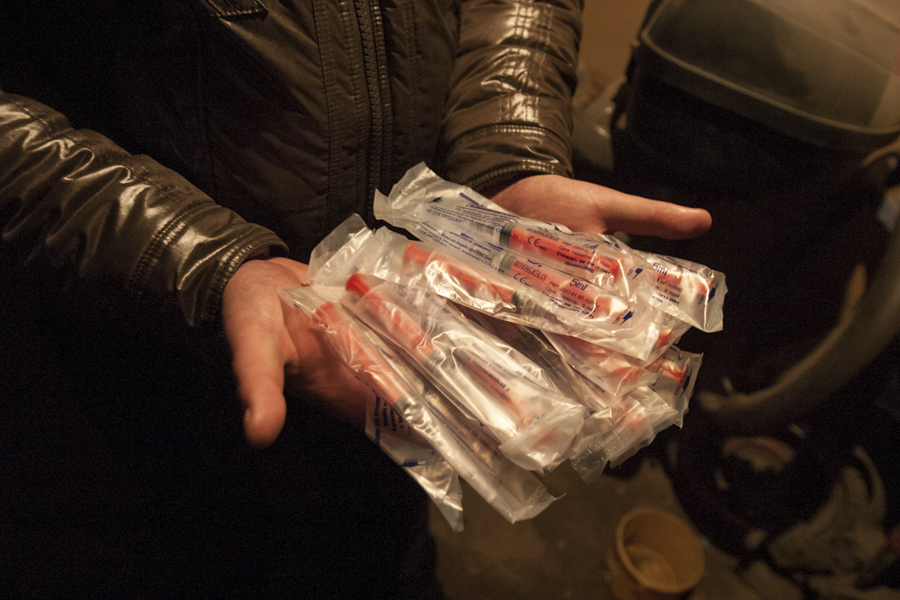
Drug overdoses are the leading cause of death for Americans under age 50, says the Justice Department. An especially lethal drug is fentanyl, a synthetic opioid 50 times stronger than its naturally derived cousin, heroin. Nationwide, deaths from fentanyl and its analogues grew from about 3,000 in 2013 to over 20,000 in 2016 according to provisional government statistics. Fentanyl is now responsible for about a third of all drug-related deaths.
The opioid crisis ravaging America seems to get worse each year. Over 2 million Americans are estimated to have a problem with opioids — from prescription OxyContin to black market heroin. Opioids alone are killing 90 Americans a day, according to the National Institutes of Health.
Since it started gaining black-market popularity in the late 2000s, fentanyl has fueled the crisis. It is so dangerous that first responders are changing how they approach narcotics users, protecting themselves from inhaling or absorbing the tiniest amounts of the drug through their own pores. Fentanyl is the drug that killed Prince, the musician. Nevada is considering using fentanyl in an upcoming execution.
Picture a Lincoln penny. Look at the president’s forehead. Cover it with powder. That much fentanyl (2 or 3 milligrams) could kill you, according to the Drug Enforcement Agency (DEA).
Why would anyone use such a dangerous drug? In many cases, they aren’t aware. New York City’s Office of the Special Narcotics Prosecutor says users are not actively seeking fentanyl. Instead, they “simply do not know what they are buying and sellers may not know what they are selling.” Dealers sometimes mix fentanyl with heroin or stimulants like cocaine to compensate for poor-quality products. Someone buying a dose of fentanyl on the street, or heroin laced with fentanyl, can have little idea of the potency. Hence the overdose risk.
Fentanyl was developed in the 1950s as an anesthetic for patients in extreme pain or end-of-life care. In its legal form, it is marketed as a patch, nasal spray or a lozenge, forms that occasionally end up on the black market.
But according to New York’s narcotics prosecutor, much of the fentanyl on the city’s streets “is illicitly produced by Mexican cartels, which obtain precursor chemicals from China.” Some of those chemicals can also be ordered online or on the Dark Web. “Law enforcement agencies have witnessed large amounts of fentanyl traveling the same smuggling routes used for transporting other drugs, such as heroin, cocaine and methamphetamine. Multi-kilogram shipments of the powerful narcotic are brought across the Mexican border inside cars and trucks and delivered to local trafficking groups in New York City and throughout the U.S.”
Recently, an even more dangerous fentanyl relative — carfentanil/carfentanyl — has appeared on the black market. One hundred times more powerful, carfentanil was designed to tranquilize horses and elephants. It can be absorbed through air and the skin, according to a warning from the New Hampshire Department of Health and Human Services. The National Institutes of Health has a summary page about the narcotic. The DEA has also issued a warning.
Naloxone: A solution?
An opioid antidote, naloxone (sometimes known by its commercial name, Narcan) has saved the lives of tens of thousands of people who overdosed on heroin. Law enforcement in some jurisdictions recommend people who know drug users keep several doses on hand in case of an emergency. But the Centers for Disease Control and Prevention (CDC) has found higher doses are required with fentanyl simply because the drug is so powerful.
Official resources
The National Institutes of Health (NIH) runs the National Institute on Drug Abuse (NIDA), which funds and publishes research and fact pages on fentanyl and other drugs.
NIDA funds the Prescription Drug Abuse Policy System, a network of academics and other researchers tracking state laws related to prescription drug abuse.
The National Drug Early Warning System, a project of the University of Maryland and NIH, publishes regular illicit drug threat assessments.
The CDC publishes data on overdose deaths and mortality statistics through its National Vital Statistics system. The CDC also publishes emergency reports on concerns such as the rising number of fentanyl deaths. The CDC’s Morbidity and Mortality Weekly report sometimes focuses on deaths from drug overdoses.
The Food and Drug Administration (FDA), which regulates medications in America, approved the fentanyl patch, but later issued a warning about the dangers of an accidental overdose.
The Drug Enforcement Agency (DEA) has an annual report with a chapter on fentanyl, including information on potency, seizures and trafficking networks. It also has a booklet on fentanyl for first responders. The DEA’s Diversion Control Division publishes data on related arrests.
The United Nations Office on Drugs and Crime (UNODC) has reported on global fentanyl trends.
Research:
A 2017 paper in The New England Journal of Medicine found that patients who are treated by a doctor who prescribes more opioids are more likely to be dependent on the drug 12 months later.
A 2017 paper in Addictive Behaviors finds immigrants are about half as likely as native-born Americans to develop a substance-use disorder.
Journalist’s Resource has written on healthcare spending, doctors’ racial biases in pain assessments, and who pays for opioids. We have reviewed research on how the use of medical marijuana may reduce the number of opioid overdoses and a 2017 paper that found doctors trained at top medical schools prescribe fewer opioids.
